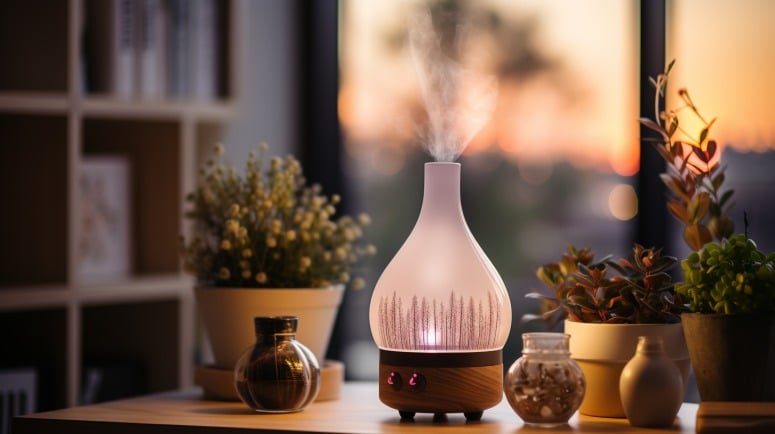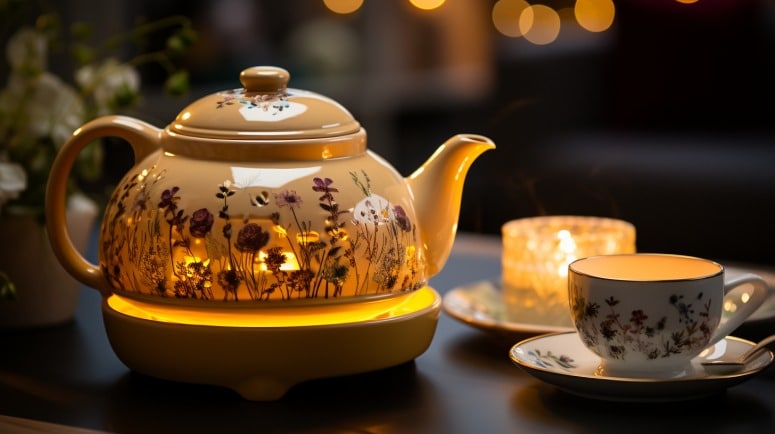If you’re a tea enthusiast like me, you’ve probably come across numerous tea ceremonies and traditions from various cultures. Trust me, one of the most captivating culture-infused ceremonies you’ll encounter belongs to the Vietnamese tea ceremony. Renowned for its intricate rituals and vibrant colors, this age-old marvel holds a special place in the hearts of Vietnamese people, playing an essential role within their wedding ceremonies. The tea ceremony beautifully symbolizes the union between two families, granting the couple blessings for a happy and prosperous marriage.
Join me in this ultimate guide as we uncover the charm of Vietnamese tea ceremonies, from their purpose to their execution, and traverse the deep waters of Vietnamese culture and traditions. By the time you finish this journey, you’ll have uncovered the soul-stirring secrets of arguably one of the most impressive tea ceremonies the world has to offer.
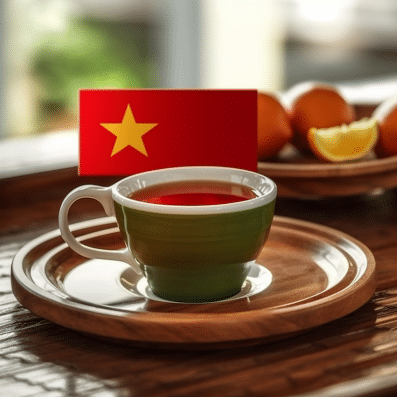
Table of Contents
The Roots of Vietnamese Tea Ceremony
Tracing back to its origins, the Vietnamese tea ceremony has been an integral aspect of the country’s rich culture and history. Steeped in tradition, this captivating ceremony has existed for centuries, inspired by a blend of Chinese and Vietnamese customs focused on conveying respect and gratitude. The ceremony’s history is deeply entwined with Confucian values, emphasizing respect for hierarchy within families and a harmonious balance between yin and yang elements.
Embracing the notion of “filial piety,” the Vietnamese tea ceremony allows the bride and groom to show their deep appreciation for the upbringing and support provided by their parents and elders. An essential component of any Vietnamese tea ceremony is, of course, the tea itself.
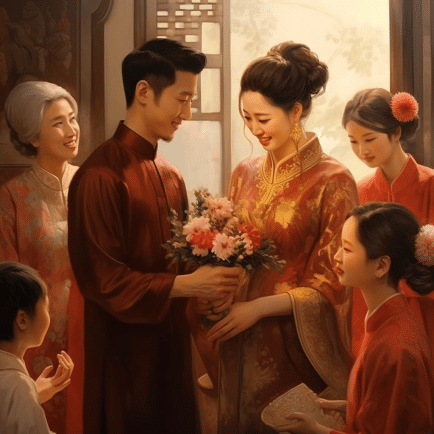
The traditional and most commonly used tea for tea ceremonies is Vietnamese green tea, specifically “Trà shan tuyết” or “Snow tea.” This particular tea grows high in the mountainous regions of Vietnam, and its name comes from the white fuzz that appears on the tea leaves, resembling snowflakes.
Trà shan tuyết” is highly regarded for its subtle flavor, complex aroma, and health benefits. Its delicate nature and exquisite taste make it an ideal choice for occasions as significant as the tea ceremony, symbolizing purity and longevity.
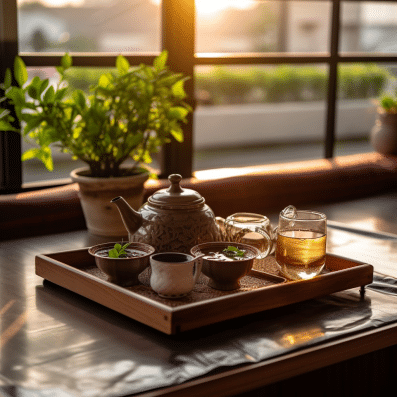
Aside from green tea, another popular tea variety often used in tea ceremonies is chrysanthemum tea. It represents fidelity, sincerity, and a wish for a happy marriage – values held in high esteem within Vietnamese culture.
Planning and participating in a Vietnamese tea ceremony involves embracing its fascinating history and profound significance alongside the careful selection of tea. Understanding these fundamental aspects helps us appreciate the ceremony’s unique allure, honoring the couple’s journey and the culture that thrives behind it.
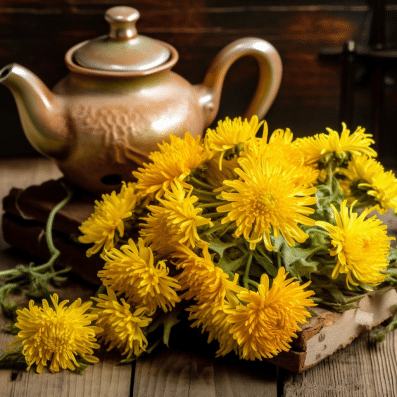
The Purpose of a Vietnamese Tea Ceremony
The Vietnamese tea ceremony, or “lễ trà,” is a vital aspect of Vietnamese weddings – and I say this after attending countless ceremonies. Its true significance lies in the act of honoring and showing respect to the families, as well as the ancestors of the bride and groom. The beautiful ceremony serves as a platform for the couple to express their gratitude to their parents and elders for the love, care, and upbringing they have received.
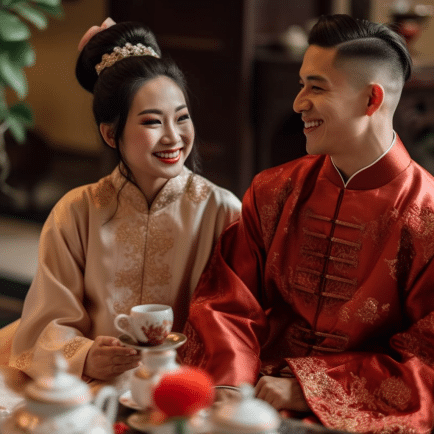
In Vietnamese culture, the tea ceremony is often considered more important than the Westernized wedding vows. It’s during this event that the two families formally become one, and the couple receives blessings and good wishes for a happily married life from their newly united family members. Now that we’ve grasped the beautiful purpose behind this ceremony, let’s dive into the specific traditional elements and steps involved, shall we?
Traditional Elements and Steps in a Vietnamese Tea Ceremony
If you ever find yourself lucky enough to be part of a Vietnamese tea ceremony, you must understand that it is a step-by-step process that unfolds with grace and precision, observed by generations upon generations. Let me walk you through these steps, so you know exactly what to expect:
The Procession
The ceremony usually begins with the groom’s family, led by the groom, arriving at the bride’s house bearing elaborate gifts wrapped in vibrantly colored red (cổng) paper. The procession often includes playing traditional music, and certain items like betel leaves, areca nuts, and a roasted pig will be present as a part of the gift-giving.
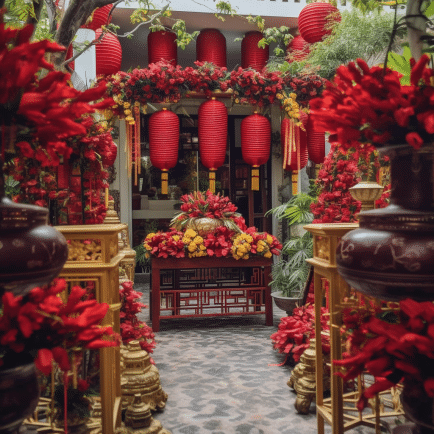
Formal Introductions
The groom’s parents or a chosen elder in the family introduces the groom and his family members to the bride’s family. The bride’s family then does the same.
Gift Exchange
During this part of the ceremony, the groom’s family presents their gifts to the bride’s family, signifying their commitment and respect.
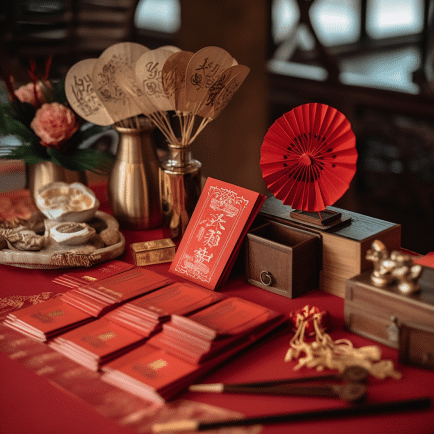
The Tea Ceremony
The bride, wearing traditional attire called “áo dài,” enters the room, and the actual tea-serving commences. The couple serves tea to their family members, starting with the elders and working their way down the family line. As the tea is served, the couple receives blessings, advice, and gifts from the family members, usually in the form of red envelopes containing money or jewelry.
Receiving Blessings
Once the tea has been served and the couple has received their blessings, family members offer their congratulations and parting words to the couple for a long and happy marriage. Phew, that’s just a basic outline of the tea ceremony!
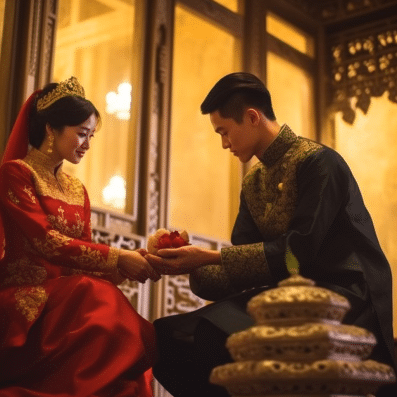
Now, let’s dive into what’s really at the heart of a Vietnamese tea ceremony: the gifts and the attire.
Vietnamese Tea Ceremony Gifts and Attire
In Vietnamese tea ceremonies, both gifts and attire hold great importance. As a tea expert who’s had the pleasure of attending these ceremonies, I always found these aspects truly captivating. Let’s explore them further, shall we?
Gifts
Gifts are an essential part of Vietnamese tea ceremonies, and they come from both the groom’s family and family members who have been served tea. Typical gifts from the groom’s family include betel leaves, areca nuts, a roasted pig, and even a whole chicken with a red ribbon tied to signify good fortune. These gifts symbolize wealth, happiness, and fertility for the couple. During the tea-serving, family members usually give the couple red envelopes containing money or jewelry (like gold bracelets) while wishing them well. The bride might receive special jewelry from her soon-to-be mother-in-law, representing the family’s heirlooms.
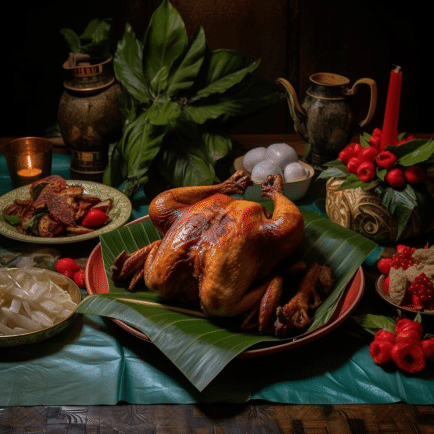
Attire
Both the bride and groom, as well as their respective family members, wear traditional Vietnamese attire. The stunning “áo dài” is worn by both the bride and the groom. For the bride, it’s commonly a red or pink “áo dài,” adorned with intricate embroidery and accessories such as a headdress called a “khăn đống.” The groom’s “áo dài” is usually blue, with gold or silver embroidery. Family members also wear their own colorful “áo dài” for the occasion, which adds to the visual vibrancy of the celebration.
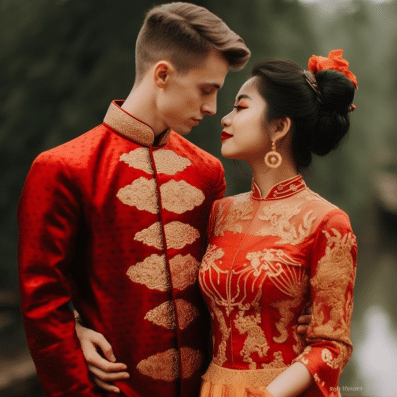
How to Plan a Successful Vietnamese Tea Ceremony
Planning and executing a Vietnamese tea ceremony can be quite the task due to its many moving parts. But as a tea expert who’s witnessed countless ceremonies, allow me to share my insights on how you can plan the perfect Vietnamese tea ceremony:
Respect Tradition
Honor the cultural customs and rituals involved in a Vietnamese tea ceremony, as they embody the essence, beauty, and significance of the occasion.
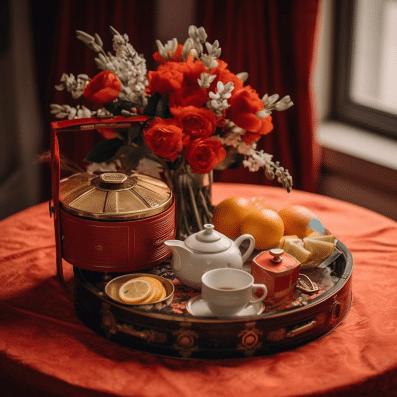
Involve Both Families
Ensure that both families – the bride’s and groom’s – take part in the preparations and decision-making process for the ceremony. This promotes unity and strengthens familial bonds.
Prepare Gifts
Both families should carefully select and prepare the gifts to be exchanged during the ceremony, as the gifts have deep cultural meaning and sentiments attached to them.
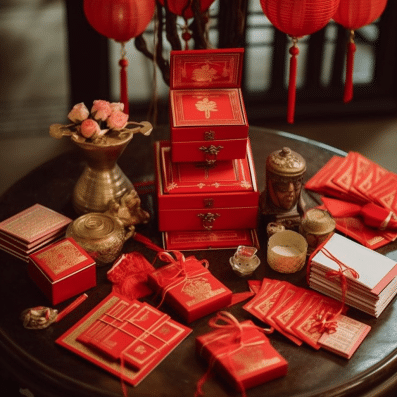
Coordinate Outfits
Plan and coordinate traditional outfits for the bride, groom, and the respective families. This not only adds to the visual spectacle but also helps reinforce the cultural significance of the tea ceremony.
Practice
I know practice makes perfect, and the same applies to Vietnamese tea ceremonies. The couple should rehearse the tea-serving ritual and familiarize themselves with the order in which they’ll serve tea to their family members.
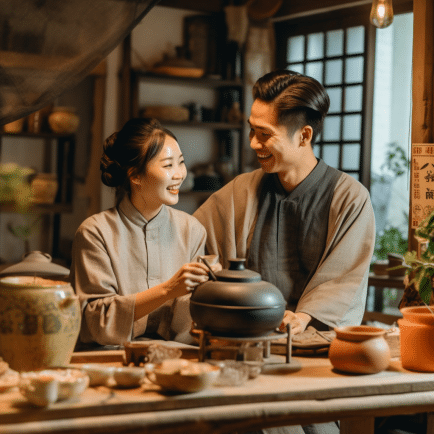
If you follow these tips and keep an open-minded, respectful approach to tradition and cultural practices, your Vietnamese tea ceremony is sure to be a memorable and heartfelt event.
Vietnamese Tea Ceremony Etiquette for Guests
If you’ve been invited to a Vietnamese tea ceremony – how exciting! But you might also feel a tad nervous about ensuring your etiquette is on point. To put those worries aside, let me share a few dos and don’ts for guests attending a Vietnamese tea ceremony:
Arrive on Time: Punctuality is crucial out of respect for the couple and their families. Plan to arrive at least 15 minutes early to ensure you can find your designated spot before the ceremony begins.
Dress Modestly and Respectfully: While Western attire is generally acceptable for guests, it’s essential to dress modestly and respectfully, considering that the ceremony is rooted deeply in Vietnamese culture.
Bring a Gift: Guests are expected to bring gifts for the couple, with red envelopes containing money being the most common option. The amount should correlate with the relationship with the couple and be placed in an amount that ends in an even number to represent unity.
Participate Respectfully: Engage in the tea ceremony with a respectful and attentive demeanor, appreciate the rituals, and, if possible, join in by offering the couple blessings or words of wisdom.
Follow these simple etiquette tips, and you’ll be a welcome guest at any Vietnamese tea ceremony!
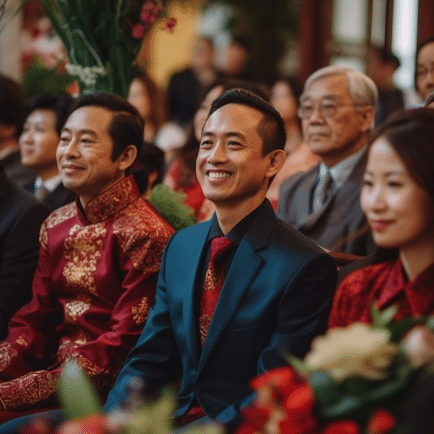
Modern Adaptations of the Vietnamese Tea Ceremony
While the traditional Vietnamese tea ceremony holds immense cultural and symbolic value, it’s worth mentioning that many modern couples are now adapting the ceremony to fit their preferences and the contemporary world. These adaptations strike a balance between preserving the essence of this beautiful tradition and adding a touch of modernity.
Combining Traditions
Many Vietnamese couples living abroad, or those marrying someone from a different culture, choose to combine their tea ceremony with other cultural traditions. This fusion allows the couple to honor their own background while respecting their partner’s heritage.
Streamlining the Ceremony
Some modern couples opt for a simplified version of the tea ceremony, skipping certain rituals or incorporating a shorter guest list to accommodate their preferences or venue limitations.
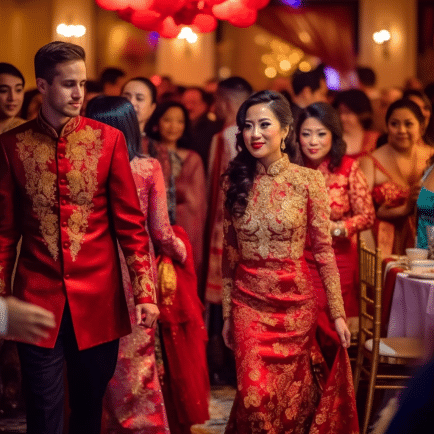
Updating Attire
Although the “áo dài” still remains popular, some couples choose to update their clothing for the tea ceremony by selecting non-traditional colors and designs, or even opting for Western-style wedding attire during the ceremony.
Adding Personal Touches
To make the ceremony unique and tailored to their relationship, couples may infuse personal elements into the tea ceremony, such as a special tea blend, incorporating a meaningful song, or sharing a symbolic ritual in addition to the traditional ones.
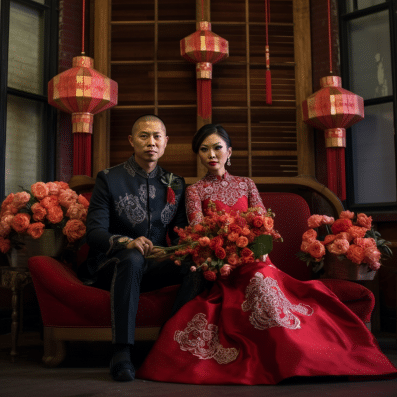
Vietnamese Wedding Traditions Beyond the Tea Ceremony
The Vietnamese tea ceremony takes center stage at a wedding, but there are other delightful traditions weaved into the whole celebration. Why not explore a few, huh?
Le Dam Ngo (Permission Ceremony)
This intimate family gathering takes place a few days before the wedding. The groom’s family visits the bride’s family to formally ask permission for their son to marry the bride.
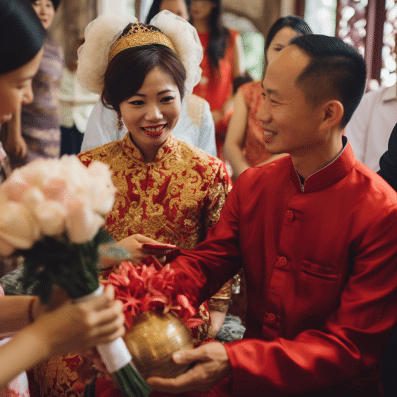
Engagement Ceremony (Le An Hoi)
The engagement ceremony involves the exchange of engagement rings and other significant gifts between the families.
Wedding Reception
Following the tea ceremony, a wedding reception typically ensues. Here, the newlywed couple greets their guests, who then shower them with blessings and well-wishes.
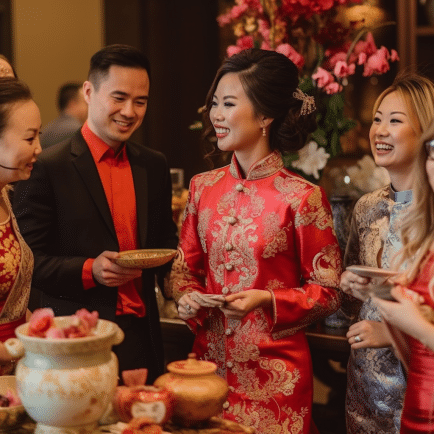
Welcome Photos
The couple often poses for welcome photos with guests wearing their traditional attire, creating picturesque mementos of the day.
Table Visits
The bride and groom visit each table at the wedding reception, offering a toast to their family and friends, fostering unity and goodwill.
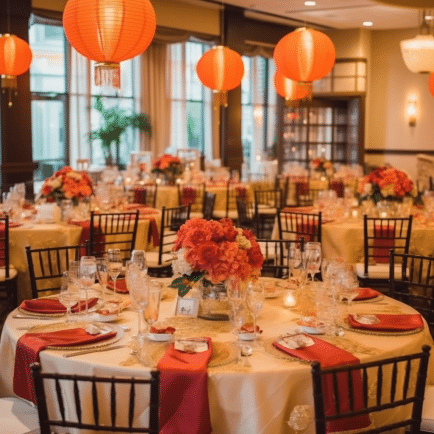
Conclusion
The Vietnamese tea ceremony is an enchanting event that encompasses the spirit of love, honor, and unity on the wedding day. This exquisite ritual involving rich cultural elements like the engagement tea ceremony celebrates the beautiful tapestry of significant elements like the bride’s dress, the candle ceremony, and the tea tray. As the bride remains upstairs, the groom party and all the family members gather, bringing gifts, to establish their roles in the bride’s new life.
Serving tea fosters an atmosphere of respect, where each participant venerates family ancestors and seeks marriage advice from elderly family members on how to cultivate a happy marriage. The groom wears a traditional Vietnamese garment to honor his heritage, as the bride’s representative shares words of wisdom. It’s fascinating to witness immediate family members, groom’s party, and wedding guests come together during the actual wedding day, rejoicing as two lives intertwine.
From the engagement party to the memorable presentations, such as the serving of green tea and the phoenix candle, each facet of the tea ceremony enhances the overall wedding experience. A traditional Vietnamese wedding is an exquisite balance of love, commitment, and culture. Within the wedding ceremony itself, the precious moments – like exchanging wedding rings or serving tea – are sure to leave lasting impressions on the hearts of everyone involved.
As we celebrate the union of Vietnamese brides and grooms throughout the ceremony, let us cherish both their personal happiness and the enchanting story spun by each unique element. Ultimately, the Vietnamese tea ceremony serves as a reminder to honor our family, friends, and heritage – weaving a tale that spans generations and leaves us in awe of the beauty of love and the long and happy marriage that lies ahead.
What does the Vietnamese tea ceremony represent in a wedding?
The Vietnamese tea ceremony, also known as “lễ trà,” symbolizes the union between two families and establishes a connection between the bride, groom, and their elders. It reflects a strong sense of respect, honor, and gratitude, allowing the couple to express their appreciation for their family’s love, care, and upbringing. The ceremony is a crucial part of Vietnamese weddings and is often considered more important than the western-style exchange of vows.
What type of tea is commonly used in a Vietnamese tea ceremony?
Vietnamese green tea is the traditional choice for tea ceremonies, specifically “Trà shan tuyết” or “Snow tea.” This tea is grown in high-altitude regions of Vietnam and is known for its white fuzz on the leaves that resemble snowflakes. “Trà shan tuyết’s” subtle flavor, exceptional aroma, and health benefits make it an ideal choice for special occasions like tea ceremonies. In some cases, chrysanthemum tea, symbolizing fidelity and sincerity, may also be used during the ceremony.
How should guests dress for a Vietnamese tea ceremony?
Guests attending a Vietnamese tea ceremony should dress modestly and respectfully to honor the cultural significance of the occasion. While wearing traditional Vietnamese attire is not mandatory, it’s essential to choose a modest outfit that represents respect for the couple and their families. Western attire is generally acceptable, but it’s best to consult with the couple or their families beforehand for specific attire guidelines.
What gifts are typically exchanged during a Vietnamese tea ceremony?
In a Vietnamese tea ceremony, the groom’s family often brings gifts for the bride’s family, symbolizing their commitment and respect. Traditional gifts include items like betel leaves, areca nuts, roasted pigs, and whole chickens with red ribbons tied for good fortune. During the ceremony, family members of the couple usually give red envelopes filled with money or jewelry, which may include gold bracelets. These gifts represent goodwill, health, happiness, and fertility for the couple’s future life together.

